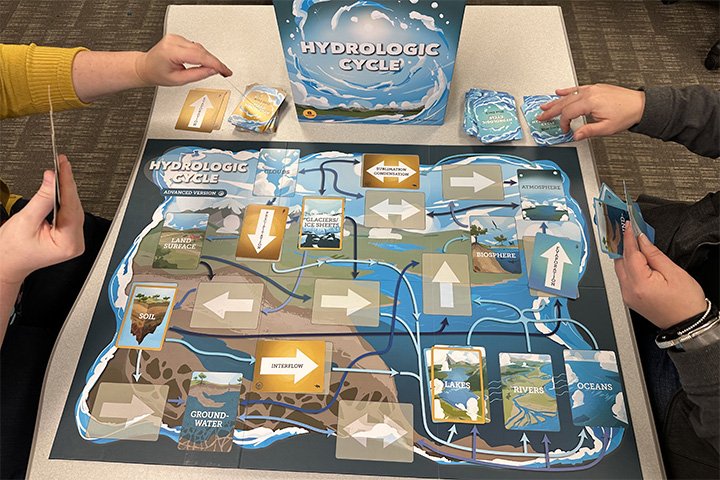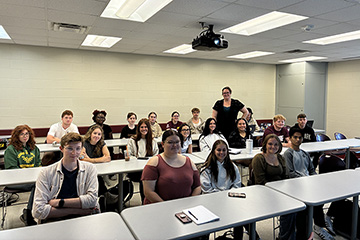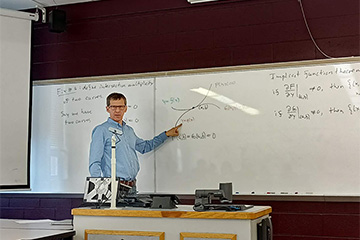Following water’s journey through a hand of cards
Game teaches water distribution, vocabulary through fast-paced play

You’re a molecule of water, a shapeshifter and a bit of a slippery fellow. Wanderlust fills your heart, and you yearn to take a journey.
You start frozen in a glacier but melt into the ground. You seep through the soil into groundwater and are discharged by a spring into a lake. Evaporation takes you into the atmosphere, where you condense around a mote of dust to form a cloud.
When you and your fellow water molecules hit the saturation mark, you fall as precipitation into the ocean. Your journey continues in all three states of existence – liquid, solid and vapor – through a dizzying series of transportation modes.
Just know that you will spend a whole lot of time in the ocean. The atmosphere, not so much.
The journey and the vocabulary used to describe it are reflected in a fast-paced card game developed by Wendy Robertson, a faculty member in the Department of Earth and Atmospheric Sciences, as a teaching aid.
Understanding the water cycle and the terms used to describe how it travels from one reservoir to another is like having the itinerary and road map of a water molecule’s travel plans. It’s a big boost in developing a game strategy.
Players who understand where water is held also have an edge, she said. Card decks used in the game are weighted to show that while most of the planet’s water is held by oceans, little is in the atmosphere.
Robertson said she developed the game to provide students with a more accessible way to learn about how the global distribution of water works than a classroom lecture.
It’s available through the Center for Learning through Games and Simulations’ Central Michigan University Press. The game – first developed by Robertson in 2015 – recently received a makeover for a Kickstarter campaign debut in late March.
One big upgrade was the game's commissioned art. Robertson said the original was, oh, crude.
“I built the thing with stick figure cows,” she said.
The game was first designed for college students. Robertson said she initially used it in a 300-level course. The new version also comes with a simplified version for elementary, middle, and high school students.




